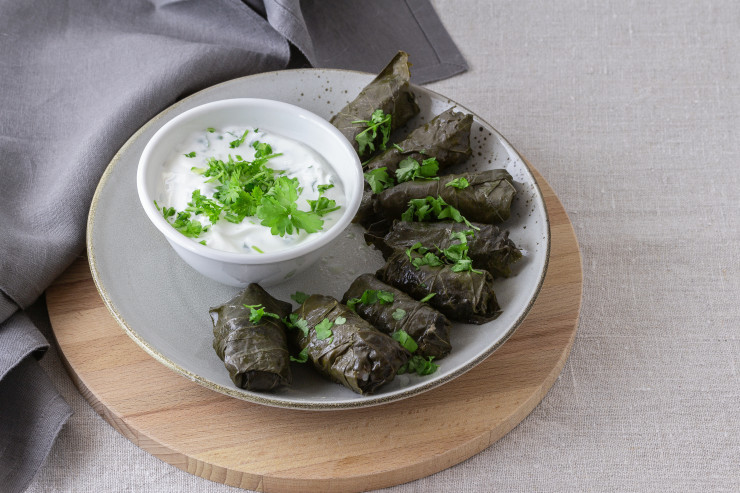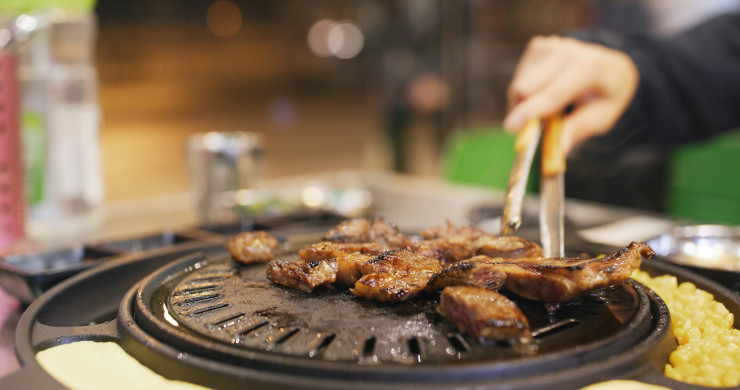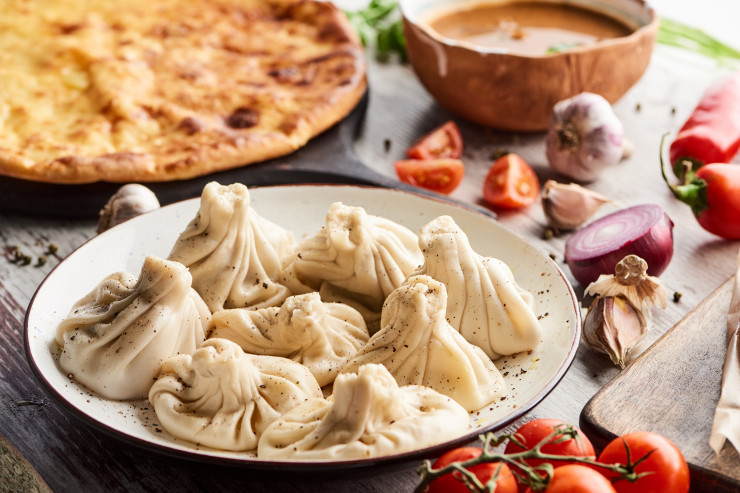


ПОДЕЛИТЬСЯ







Almaty is a big city with a population of more than 2 million people, where different nations coexist peacefully. Thanks to this, you can try both Korean kuksi and Uzbek pilaf. In this article we will tell you where in Almaty you can try dishes typical of the cuisines of the diasporas common in Kazakhstan: Uyghur, Dungan, Korean, Armenian and Georgian.








Almaty is a big city with a population of more than 2 million people, where different nations coexist peacefully. Thanks to this, you can try both Korean kuksi and Uzbek pilaf. In this article we will tell you where in Almaty you can try dishes typical of the cuisines of the diasporas common in Kazakhstan: Uyghur, Dungan, Korean, Armenian and Georgian.
The so-called "uzbechki" are very popular in the city. It is what Almaty citizens call small cafes with traditional oriental cuisine, which are mainly located in the upper part of the city, in the Mount Giant (or Gornyi Gigant) district. Restaurants and larger cafes with Eastern cuisine are mostly concentrated in the Almaly region.
The most authentic Armenian cuisine can be found in the lower part of the city: here is the "Armenian Village", inhabited by families of the Armenian community. You will find establishments serving Georgian and Korean dishes in any part of the city: both in the Aksai region and in the Medeu region.
A distinctive feature of the cuisines of these peoples is the harmonious taste and bright aroma of dishes, an abundance of vegetables, herbs, various spices and seasonings. Let's talk about the most popular of them.
Manti
Manti is a dish made from thinly rolled dough with various fillings. Usually, it is finely chopped meat with onions and spices, or sometimes with squash or jusai (a herbaceous plant of the onion family, also called Chinese leek). Manti is served with different sauces and seasonings. For example, manti can be served with "lazjan", a dressing made from red pepper seasoned with vegetable oil and garlic. Or with "cobra", a seasoning made from tomatoes, garlic, and pepper, is also often used. A variety of manti with any filling, but fried in oil until golden brown, is called "khoshan".
 Foto depositphotos.com
Foto depositphotos.com
Lagman
Lagman is a traditional Uyghur and Dungan dish made from thin noodles with various gravies. Usually, it is made from meat, vegetables, and spices. Based on the gravy recipe and the cooking method, the dish is divided into guiru lagman (with coarsely chopped vegetables), suiru lagman (with finely chopped vegetables), and tsomyan (meat is marinated in advance and then fried with noodles over high heat). A huge assortment of vegetables and herbs are used for gravies: green onions, jusai, celery, radishes, garlic arrows, beans, tomatoes, peppers, eggplants, garlic, carrots, and kohlrabi. The ingredients vary depending on the season.
 Foto depositphotos.com
Foto depositphotos.com
Dolma
Dolma is certainly one of the most recognizable Armenian dishes. Armenia even holds an annual festival in honor of this dish. This is tender minced meat wrapped in grape leaves and combined with cooked rice. Its taste is unique and it truly wins the hearts of gourmets. Stuffed cabbage rolls, made in the shape of neat "fingers", are usually served with sour matsun yoghurt and chopped garlic. Walnut-mushroom and cherry sauce is often added to dolma. The dish does not have a strictly defined recipe, so it exists in many variations.
 Foto depositphotos.com
Foto depositphotos.com
Pilaf
Pilaf is one of the most popular dishes of the Turkic people. It is prepared with rice, meat (usually lamb), carrots, onions, and spices. Pilaf often prepares for big events and holidays. Uyghur’s cuisine, as in any Turkic one, has a wide variety of pilaf: vegetarian, made from millet or wheat; pilaf in a bag; pilaf with gravy, eggs, or fruits.
 Foto depositphotos.com
Foto depositphotos.com
Korean barbecue
Korean barbecue is a method of grilling thin slices of meat and vegetables on a gas or charcoal grill built into the center of the table.
The tradition of preparing dishes right at the table, common in Korea, has been popular in Almaty for several years. Restaurant visitors with this option can fry meat or fish on the grill, boil vegetables and meat in a special cauldron, or mix their own salads. The waiter brings all the necessary ingredients. The dish is accompanied by a variety of side dishes known as banchan. Each dish has its own marinade. During the cooking process, guests are given the opportunity to turn or remove meat and vegetables to their liking. Interactive dining experiences add fun and social interaction to the lunch or dinner experience. There are many variations of cuts of meat that can be prepared in this way.
The most popular are jadolbaegi (thinly sliced brisket), andeungsi (beef tenderloin), galbi (beef short ribs) and bulgogi (beef strips).
 Foto depositphotos.com
Foto depositphotos.com
Dapanji
Dapanji is a dish of Dungan cuisine made from juicy pieces of chicken fried in hot oil with various spices and seasonings, which create a bright and aromatic taste. The main ingredients are garlic, ginger, mustard, soy sauce, rice vinegar, sugar, salt, and oil. The essential element of this dish is soy sauce, which gives it its characteristic taste.
 Foto depositphotos.com
Foto depositphotos.com
Choshurya
Choshurya is the Uyghur equivalent of dumplings filled with beef (or lamb) and onions. There are several delicious ways to prepare this dish. In the first case, dumplings are fried in oil until golden brown, and in the other, boiled dumplings are served with broth and vegetables. We recommend you try choschurya with clover; it is usually prepared in the spring when the topmost young leaves are cut off from young clover.
 Foto depositphotos.com
Foto depositphotos.com
Khinkali
Khinkali is the embodiment of the taste and hospitality of the Caucasus. The combination of skillfully rolled thin dough and aromatic minced meat, usually beef with added spices, creates a unique flavor bouquet. The Georgian dish requires a special skill when eating: khinkali is eaten by holding the tail to retain the juice inside. They are usually served hot, often with additional spices or sauces such as adjika, tkemali or sour cream, which complement the aroma and taste. It is worth noting that khinkali filling is not only meat or vegetable. There are sweet khinkali with cherries and even chocolate.
 Foto depositphotos.com
Foto depositphotos.com